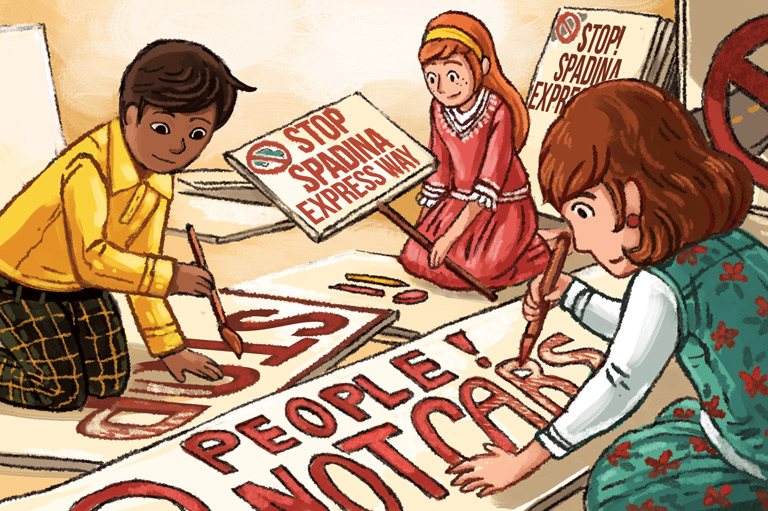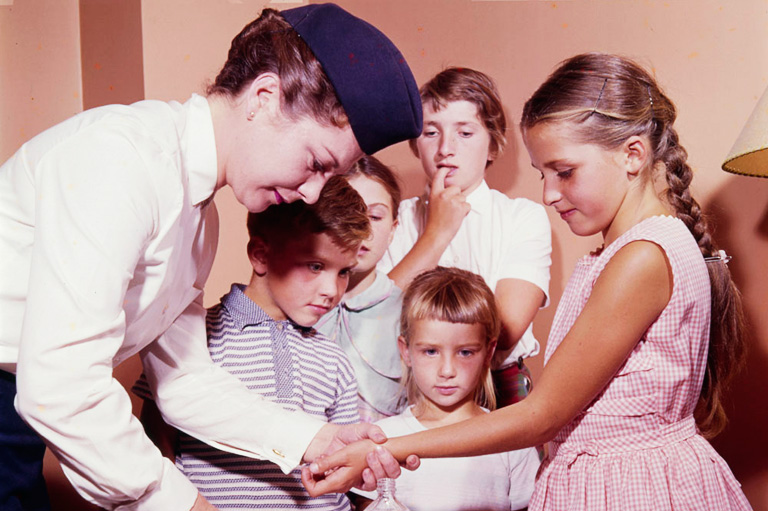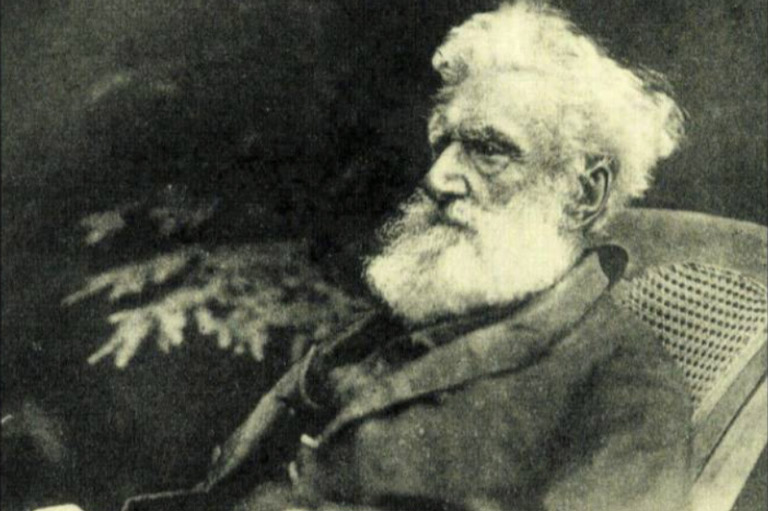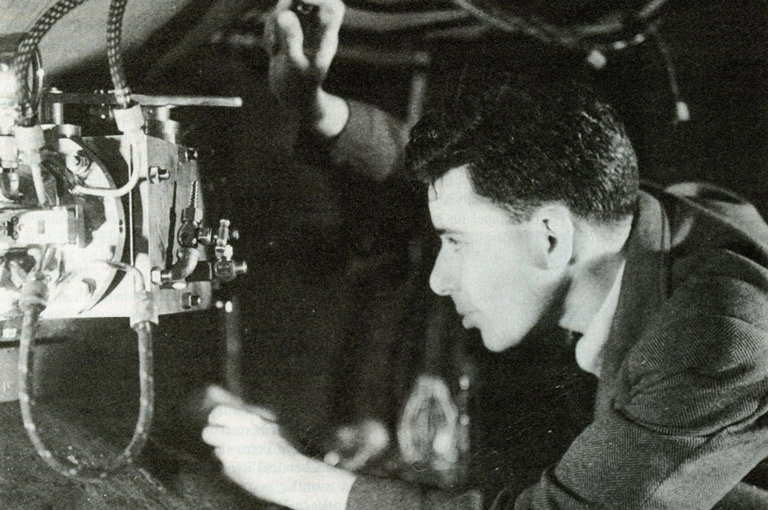Time for a Change
For a long time, towns, cities and even individual trains kept different times on their clocks. Sir Sandford Fleming changed all that after an unexpected night in a train station.
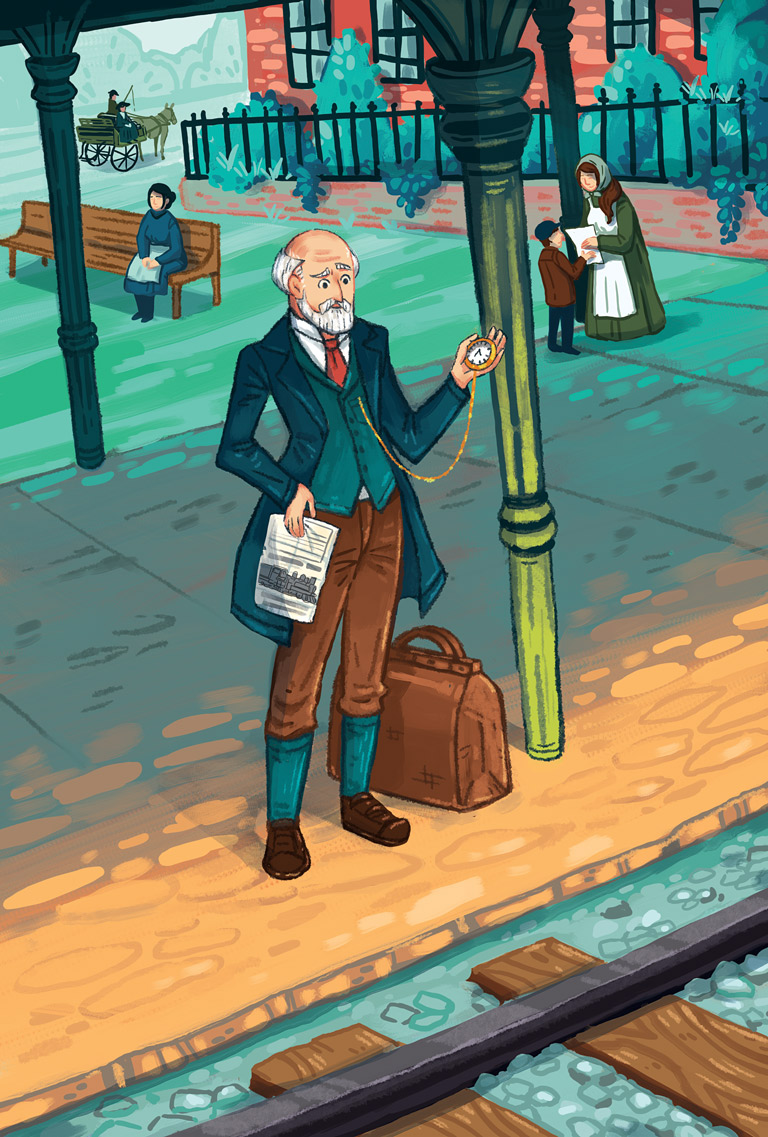
Bundoran, Ireland, July 1876
Sandford Fleming breathed in the warm summer air and smiled at the sound of twittering birds in the trees around the train station. Actually, it was a little strange that things were so peaceful.
He pulled a watch from his waistcoat pocket and double-checked the schedule in the Irish Railroad Travellers’ Guide. No mistake about it — the train was due at 5:35 p.m. Perhaps no one else was travelling to Londonderry today.
Fleming sat down on a bench to enjoy the sunshine. Maybe he would close his eyes just for a moment.
“Excuse me sir,” a voice said politely. “Can I help you?”
Fleming blinked in confusion at the uniformed man, then jumped up. “Did I miss the 5:35 to Londonderry?” he asked.
Now it was the stationmaster’s turn to look confused. “There’s no train to Londonderry this time of day, sir. Come inside and we’ll sort this out.”
“I may be getting on,” said Fleming tartly as they headed indoors, “but I still know how to read a train schedule.” He handed the stationmaster the guide.
After a moment, the man shook his head. “Here’s the problem — this schedule says 5:35 p.m., but the train to Londonderry actually leaves at 5:35 a.m.” He pointed at the big chalkboard on the wall of the waiting room.
Fleming’s face fell. “Blast and botheration! I’ll miss my ferry to England.” He looked around the simple waiting room. “And I guess I’m spending the night here.”
“I’m very sorry, sir,” the stationmaster said. “I’d invite you to stay the night with us, but with the new baby, nobody gets much sleep these days. My name is James Boyle. I’ll send my son Tommy over with something from the pub for your supper.”
“That would be very kind of you and Tommy,” Fleming said. “I’ll be fine. But I’d like to have a word with whoever’s responsible for that misprint!”
Fleming’s eyes lit up as an idea occurred to him. His mind whirring, he didn’t hear Boyle say goodbye. “What if we had a new way to talk about time?” he said to the empty station. “In fact, what if we had a new way to think about time?”
He grabbed a rag, wiped off the arrival and departure times neatly written on the chalkboard and quickly drew a rough map of the world, with lines running from top to bottom. As evening fell and the station grew dark, Fleming drew, wrote, erased and started over. He was so lost in his work that he didn’t notice as the station door opened and a boy came in, carrying a cloth-covered basket.
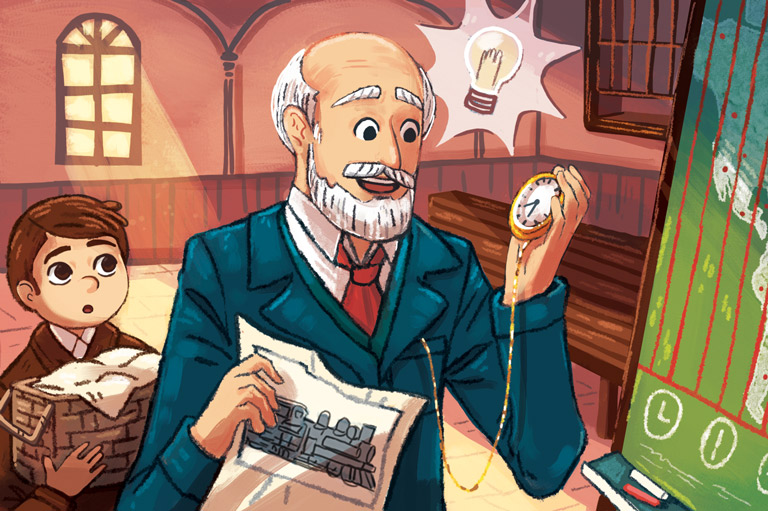
“Here’s your dinner, sir,” the boy said. Fleming whirled around, his surprise at being disturbed quickly turning to a warm smile.
“You must be Tommy,” he said. “I’m sorry to be so distracted, but I’ve just had rather a big idea.”
Tommy looked at the blackboard, trying to make sense of Fleming’s work. “Does this have anything to do with that mistake about the train?”
“Well, that’s where it started,” Fleming said. “That mix-up made me realize that instead of counting the hours twice — six a.m. and six p.m. — we could have a 24-hour system so each time has its own number.” Seeing the puzzled look on Tommy’s face, Fleming went on. “Instead of counting the hours from one to 12 and then starting over, we’d count from one to 24 each day.”
Tommy still looked uncertain. “You mean, we’d have a six o’clock and a . . . an 18 o’clock?”
“I know it sounds strange,” Fleming admitted, “but just think — no one would ever be unsure of the time again. A 5:35 train could only leave in the morning!”
“Because if it was around suppertime, it would be the 17:35, right?” Tommy said.
“Exactly,” Fleming agreed. “But there’s a bigger problem than that.” He pulled a sandwich and a slice of fruitcake out of the basket.
“Imagine we’re in England and this” — he held up one half of the sandwich — “is Liverpool, and this” — he held up the other half — “is London. Now, Liverpool and London each have their own official time, and so does every town along the railway. So if you want to catch the train, do you use the time in London, Liverpool or your town?”
Tommy was interested now. “But the trains all keep their own time, too. My dad says people who don’t know that get really angry — they think the train is early or late, when really it’s just on a different time.”
Fleming pointed the London sandwich at Tommy. “Exactly! It’s terribly confusing. Why, did you know that the city of Buffalo in America has three railways, which means it has three official times? Ridiculous!”
He turned to his chalkboard map. “But if we had zones where every town and city had the same time, we could all agree. No more rail accidents and no more confusion.”
Tommy grinned. “And no more missed trains to Londonderry!”
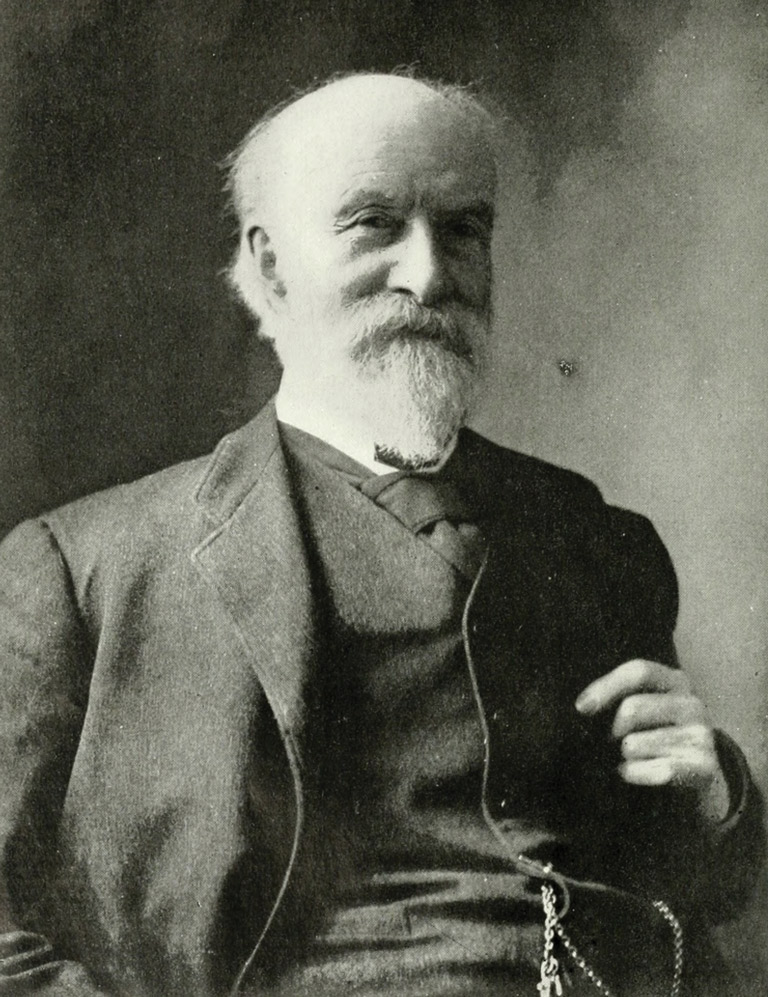
Imagine what life would be like if the official time in your town or city was a few minutes different from the time just down the road. If your school was in another town, you’d be late or early every day. More seriously, trains and airplanes could smash into each other if they thought the way was clear at a certain time.
That’s what it was like until 1884, when the world adopted Sandford Fleming’s idea for a system of 24 time zones going all the way around the world. Each zone stretched from the North Pole to the South Pole. Every place in a zone would have the same time, which is why when it’s 2:00 in Winnipeg, it’s also 2:00 in Chicago and Mexico City.
Airlines, trains, the military and other organizations use Fleming’s 24-hour method of counting time to prevent misunderstandings like the one that made him miss his train. In that system, the morning hours are counted up to 12 as usual. Then it goes 13:00 and so on up to 24:00 when it starts over. (These times are pronounced “13-hundred,” not “13 o’clock.”)
Fleming was born in Scotland and moved to Canada in 1845 as a young man, starting out in Peterborough, Ont., and moving to Halifax and then Ottawa. He helped build the Intercolonial Railway, and urged the British government to build a railway between what are now Ontario and Manitoba. In 1871, he was hired as the chief engineer to work out a route for the new national railway.
Fleming, who was knighted in 1897, also designed Canada’s first stamp, the three-penny beaver, in 1851, and pushed for an undersea communication cable to be laid all the way from Canada to Australia, which was completed in 1902. Although he was stubborn, he was also fair. He ensured that First Nations people who worked on the railway were paid the same wages as other workers, and he gave all employees Sundays off.
Sir Sandford Fleming died in Halifax in 1915. He is buried in Ottawa’s Beechwood Cemetery.
Themes associated with this article
Advertisement
More fiction features
Kayak: Canada’s History Magazine for Kids — 4 issues per year for as low as $14.95.
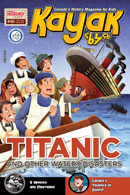
Canada’s History Archive features both English and French versions of Kayak: Canada’s History Magazine for Kids.




